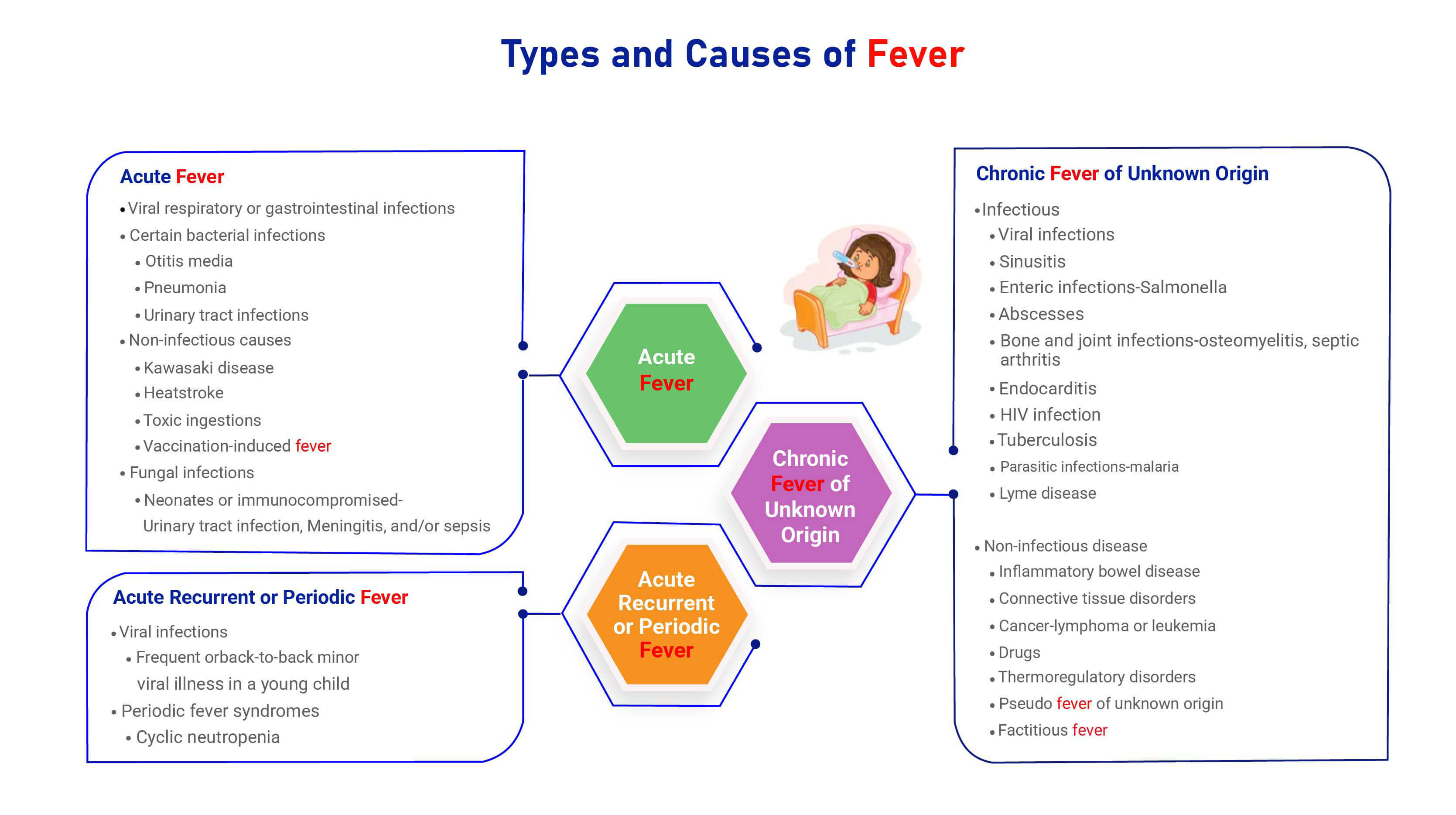
DISCLAIMER
Please note: The information contained in this section is restricted to medical and healthcare practitioners for general education and information purpose only

In infants: Fever is defined as a core body temperature ≥ 100.4°F.
Several studies have documented that peak temperature tends to be in the afternoon and is highest at about 18 to 24 months of age, when many normal healthy children have a temperature as high as 101°F.

Fever is one of the most troublesome symptoms for parents, caregivers, and Doctors. If untreated, it may progress to brain damage, seizures, and death.
Even though fever management differs in specific clinical situations, in some cases it may increase metabolic and oxygen consumption, hence, treatment may sometimes be needed.
A clinical report from the American Academy of Paediatrics has suggested that the primary aim of offering treatment for a febrile child should be to improve the wholesome comfort level of the child and not just reduce the temperature.
A long-acting anti-pyretic will offer a long-lasting reduction of body temperature and provide the necessary comfort.
Doctor also believe that the risk of heat-related adverse outcomes is increased with a temperature above 104°F, and almost 90% of Doctors prescribe antipyretic therapy at temperatures>102°F.
Febrile seizures are the most common type of acute seizure, affecting approximately 2-14% of children aged 6 months to 6 years worldwide. Presently, Paracetamol, Mefenamic Acid, and Ibuprofen are the anti-pyretics of choice used to treat fever in children.

